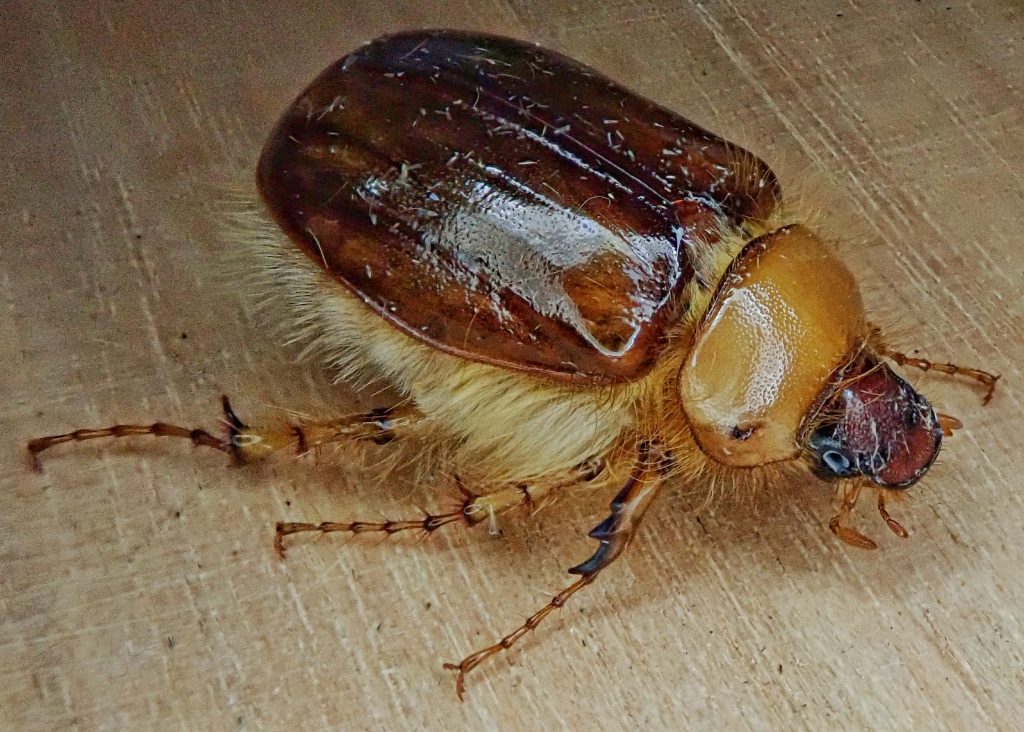
Here is another ‘blast from the past’, rediscovered during my organization of old photos, a handsome species of scarab beetle that I’ve only found the one time, whilst running lights with Craig Sondergaard in an oak/pine woodland in the Columbia River Gorge in early June of 2020. Phobetus comatus are known to come to lights, and they were abundant on that evening. It would possibly be more accurate to say that this is ‘in the Phobetus comatus complex’, because the experts say that revision is needed in this genus, and these bugs may fall outside the present circumscription. But both Melville Hatch and Merrill Peterson say this is the only species of Phobetus in our region, and that’s good enough for me.
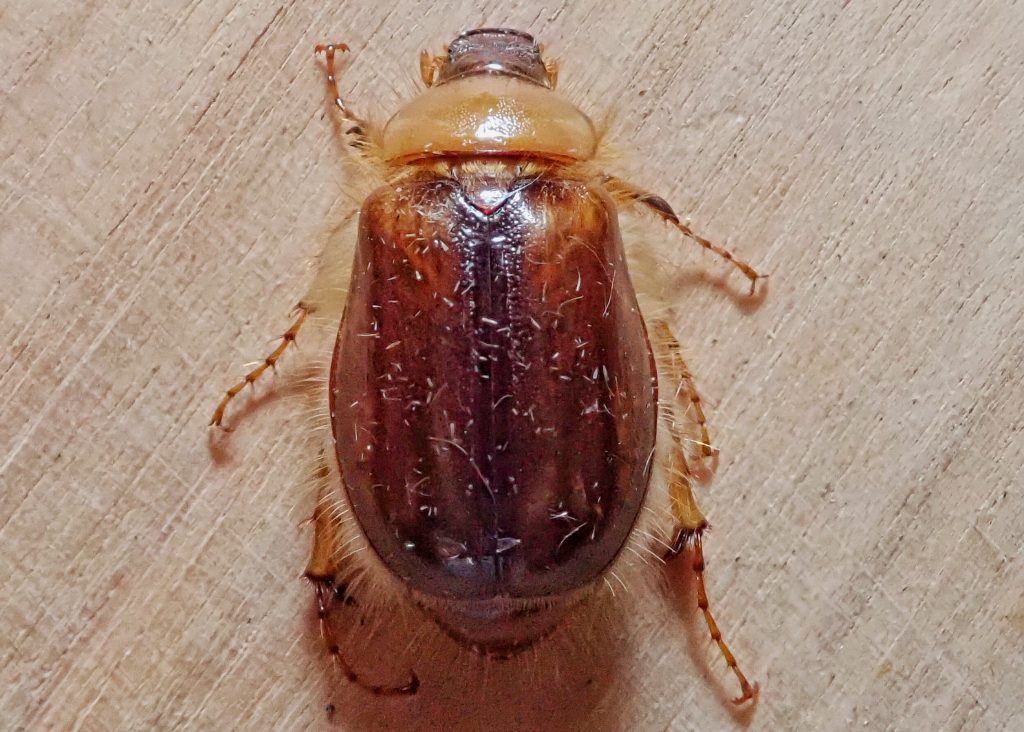
One thing I hope is that more information on their natural history comes to light if/when a revision is done. Beyond some limited larval host information, the only real natural history tidbit I found was that, according to this study (Ayre; 1958), larvae of Phobetus comatus were prevalent near the nests of the ants Formica subnitens, and he hypothesized thatit was because the ant nests create better conditions for the plants the larvae feed on, although he didn’t say what those plants might be. And, unfortunately, Ayre gives no description of the habitat at all except ‘at Westbank, BC’, though it is probably mostly open ponderosa pine forest.
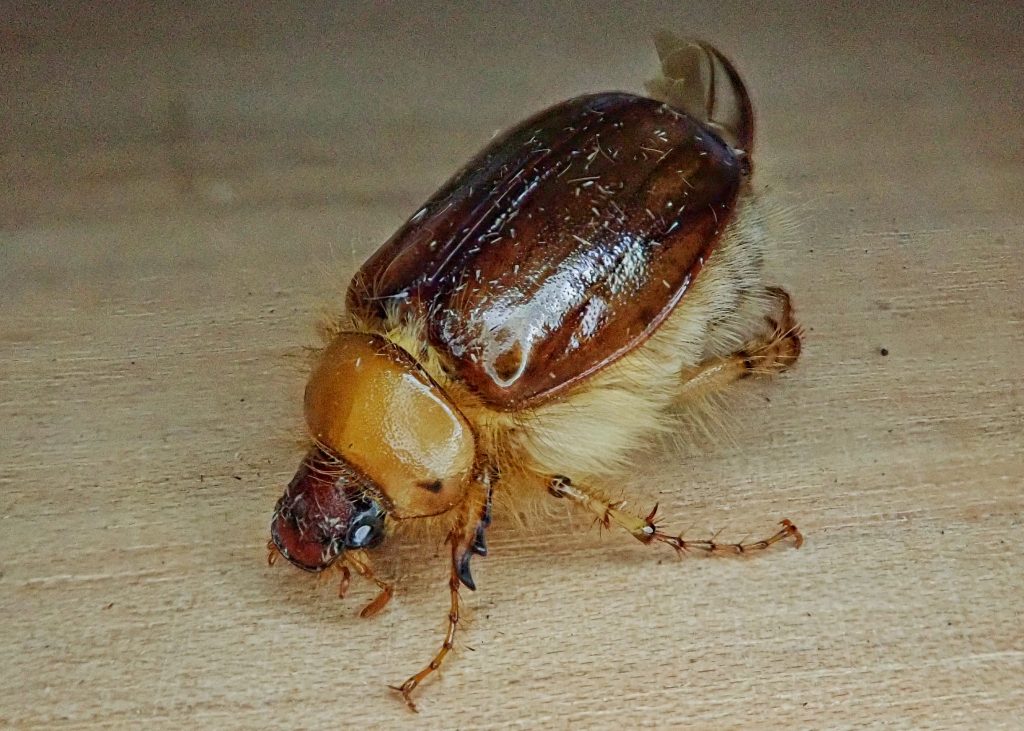
Description-Medium sized (12-17mm long) beetle with reddish brown elytra and head, yellowish brown pronotum with a brown spot near each anterior corner, and abundant long, yellowish setae on the ventral side of the body.
Similar species–Pleocoma sp (rain beetles) tend to have pronotum and elytra the same color, and have much smaller heads; Paracotalpa granicollis has dark, metallic green head and white to light grey setae.
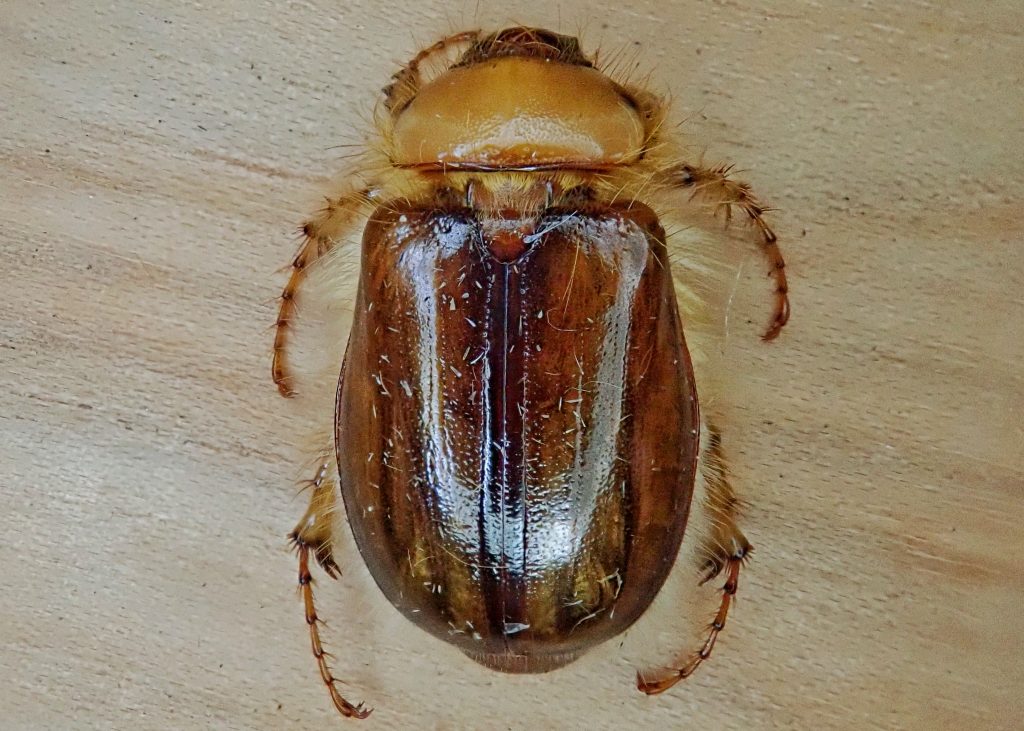
Habitat-Oak and pine woodlands and sagebrush steppe; probably others.
Range-Far western North America; region wide in appropriate habitat.
Eats-Larvae apparently feed on the roots of oaks and sagebrush; I can find nothing specific for this species, but adults of members of this subfamily (Melolonthinae) tend to feed on foliage flowers and fruit; one source says adults often found on Purshia tridentata (bitterbrush), so that may be a food source.
Eaten by-Probably insectivores of all classes.
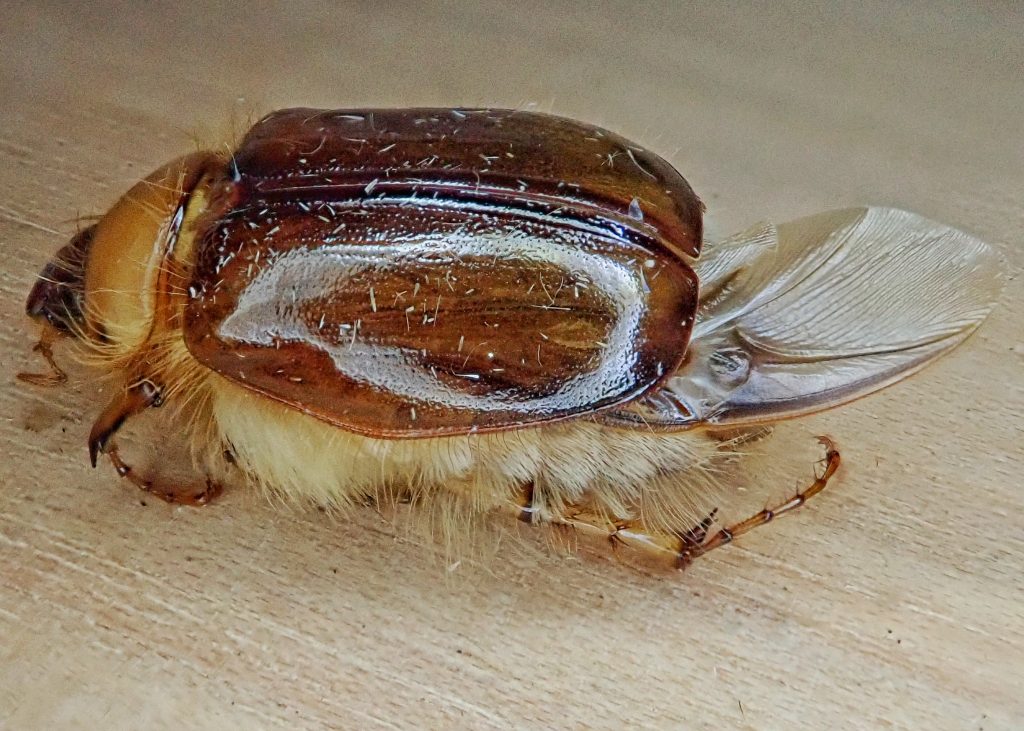
Adults active-April through June
Life cycle– seems to be unknown
Etymology of names–Phobetus seems likely to be from the Greek word for ‘tuft of hair’, because of the abundant long setae along the abdomen, but it also may be from the very similar Greek word for ‘timid’. The specific epithet comatus is from the Latin word for ‘long hair/shaggy’, also referring to the long abdominal pile.
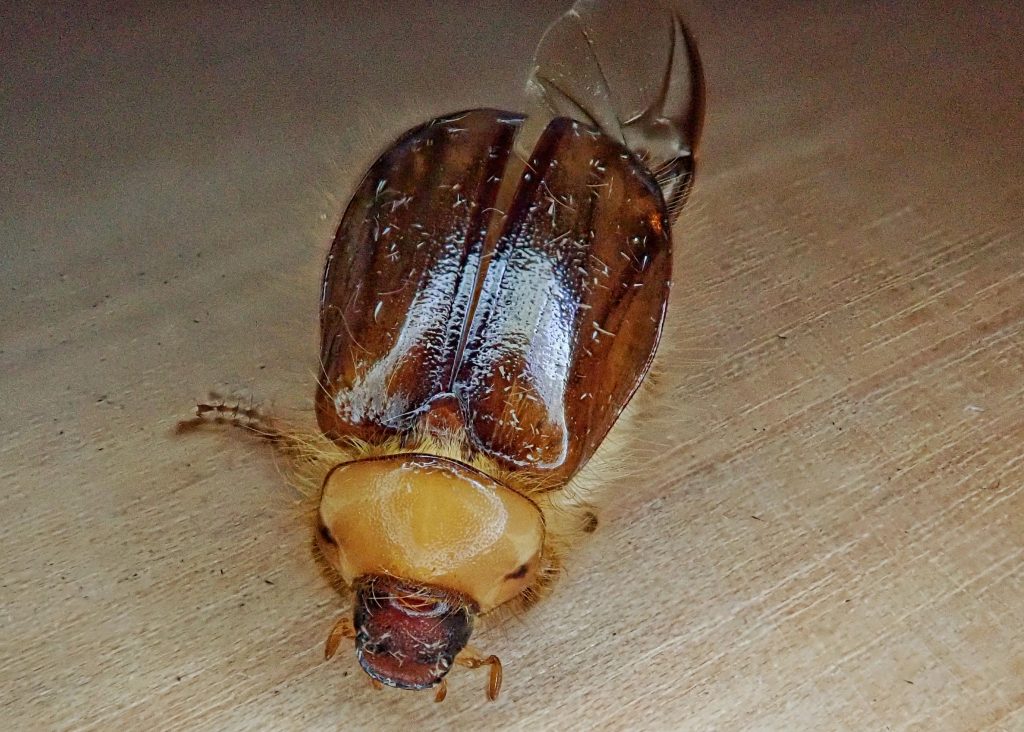
https://sci.bban.top/pdf/10.1007/bf02222426.pdf?download=true
https://bugguide.net/node/view/496511
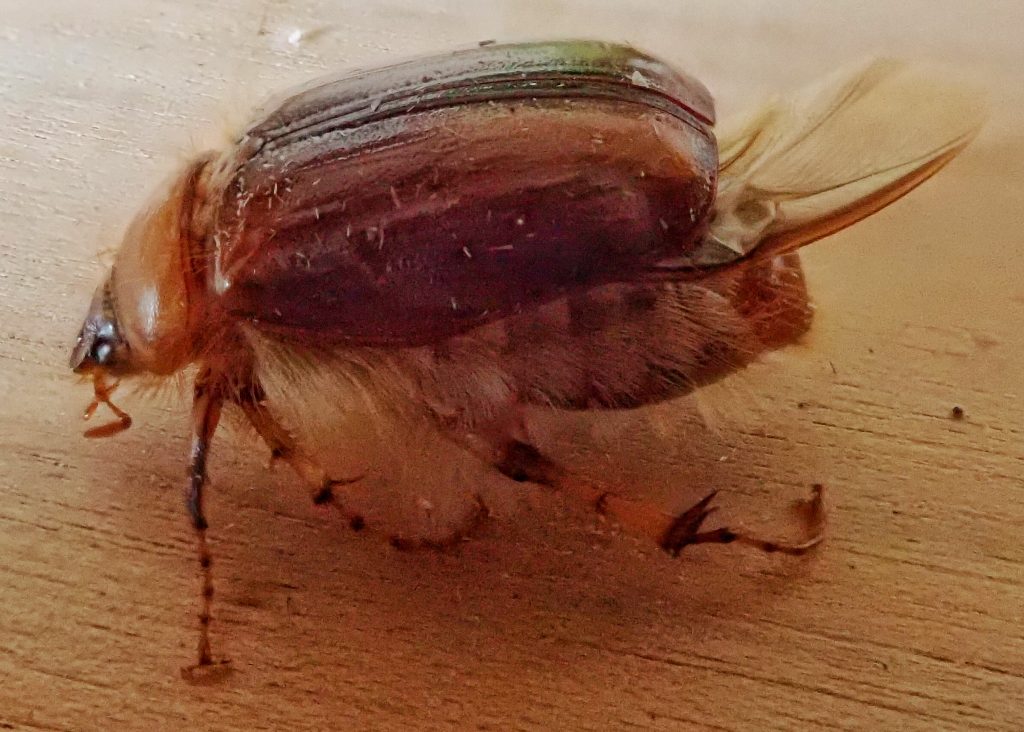
Are those pincers on the tail?
Those are just the wings sticking out of the back of the elytra.
hair!? tufts of shaggy hair??? I’m super curious why these beetles have hair, what the purpose / advantage / general biology knowledge is for tufts of abdominal hair. amazing!